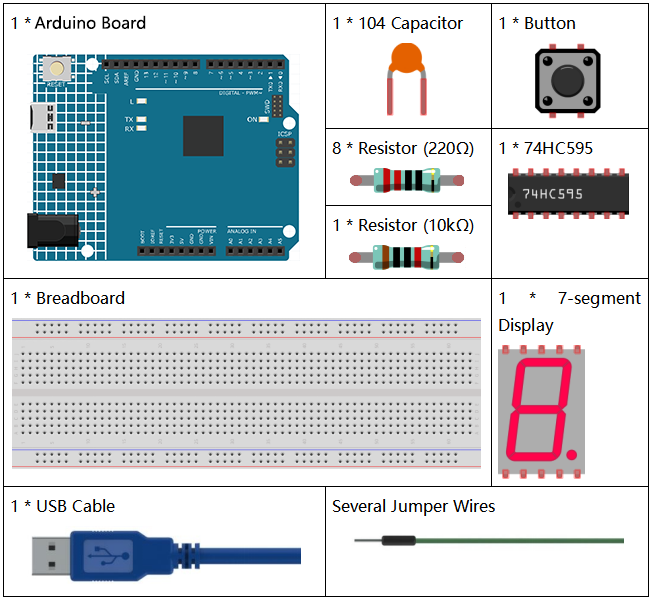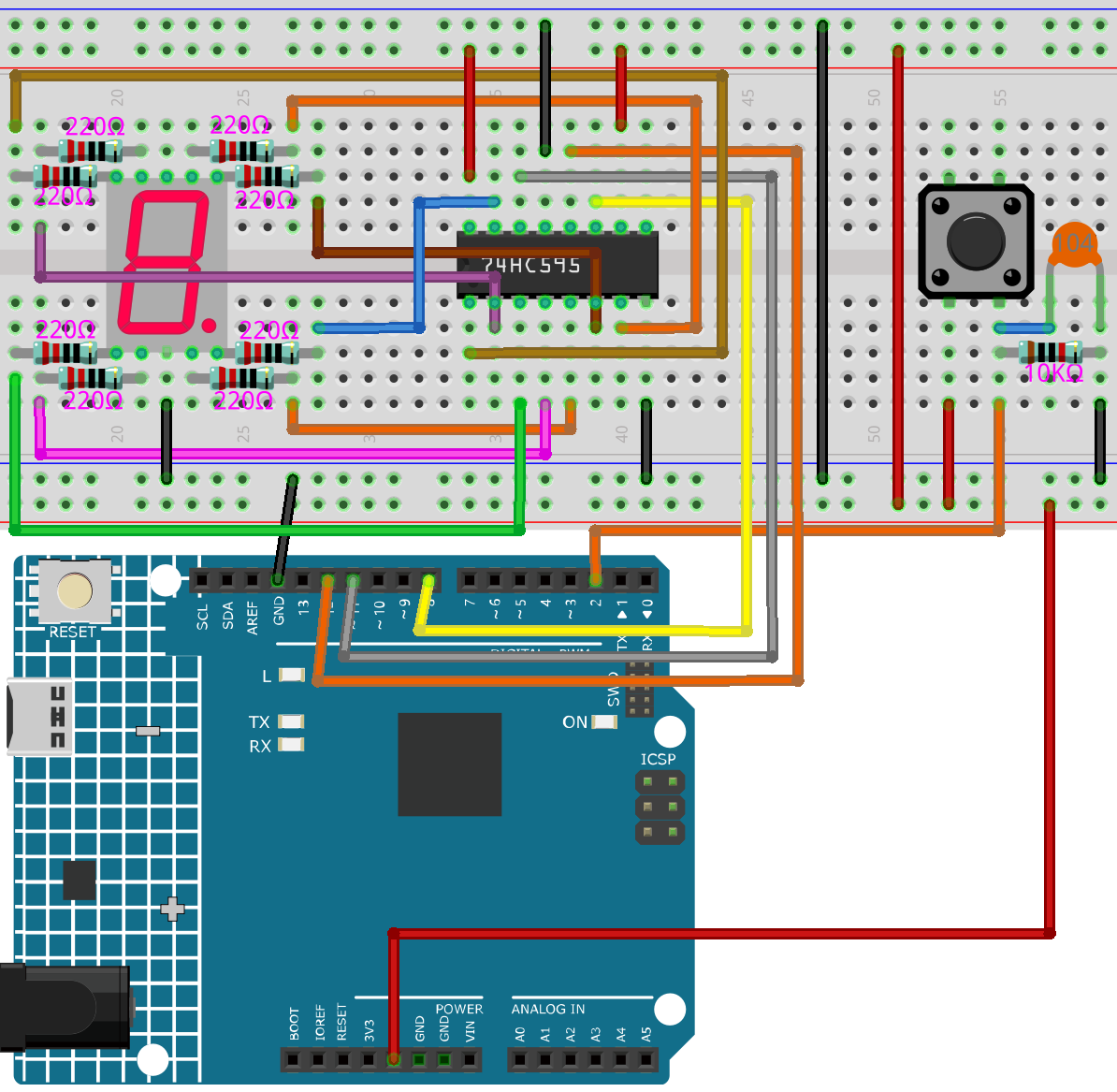Lesson 23 Simple Creation - Digital Dice¶
Introduction¶
In previous experiments, we learned how to use a 7-segment display and control LEDs by a button. In this lesson, we will use a 7-segment display and a button together to create a simple digital dice.
Components¶

Schematic Diagram¶
The idea behind a digital dice is very simple: a 7-segment display circularly jumps from 1 to 7 rapidly. When the button is pressed, the jumping will slow down until it stops on a number. When the button is pressed again, the process will repeat.

Experimental Procedures¶
Step 1: Build the circuit.

Step 2: Open the code file.
Step 3: Select the Board and Port.
Step 4: Upload the sketch to the board.
You can now see the 7-segment display jump between numbers from 1 to 6. Press the button, and the jumping will slow down until it stops three seconds later. Press the button again, and the process will repeat.
Code¶
Code Analysis¶
The initial random number comes from A0
randomSeed(analogRead(0));
The initial random number is generated from A0 and the range for the random numbers is 0-1023.
Digital Dice
void loop()
{
int stat = digitalRead(keyIn); //store value read from keyIn
if(stat == HIGH) // check if the pushbutton is pressed
If yes, the corresponding pin is high level.
{
num ++; // num adds 1
if(num > 1)
{
num = 0;
}
}
If num > 1, clear the value. This is to prevent repeated pressing. So just count it as once no matter how many times you press.
Serial.println(num); // print the num on serial monitor
if(num == 1) //when pushbutton is pressed
{
randNumber = random(1,7); //Generate a random number in 1-7
showNum(randNumber); //show the randNumber on 7-segment
delay(1000); //wait for 1 second
while(!digitalRead(keyIn)); //When not press button,program stop here.
Make it keep displaying the last random number.
int stat = digitalRead(keyIn);
Read the state of the button again.
if(stat == HIGH) // check if the pushbutton is pressed
If yes, run the code below.
{
num ++; // num+1=2
digitalWrite(ledPin,HIGH); //turn on the led
delay(100);
digitalWrite(ledPin,LOW); //turn off the led
delay(100);
if(num >= 1) // clear the num
{
num = 0;
}
}
}
//show random numbers at 100 microseconds intervals
//If the button has not been pressed
randNumber = random(1,7);
showNum(randNumber);
delay(100);
}
showNum() function
void showNum(int num)
{
digitalWrite(latchPin,LOW); //ground latchPin and hold low for transmitting
shiftOut(dataPin,clockPin,MSBFIRST,datArray[num]);
//return the latch pin high to signal chip that it
//no longer needs to listen for information
digitalWrite(latchPin,HIGH); //pull the latchPin to save the data
}
This function is to display the number in dataArray[] on the 7-segment display.